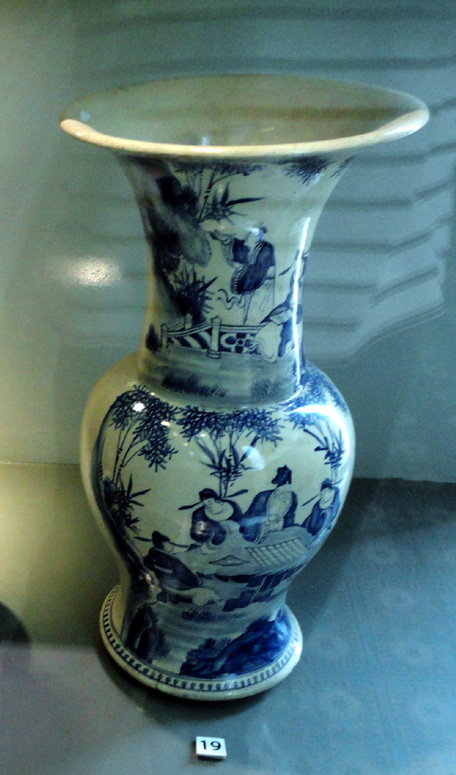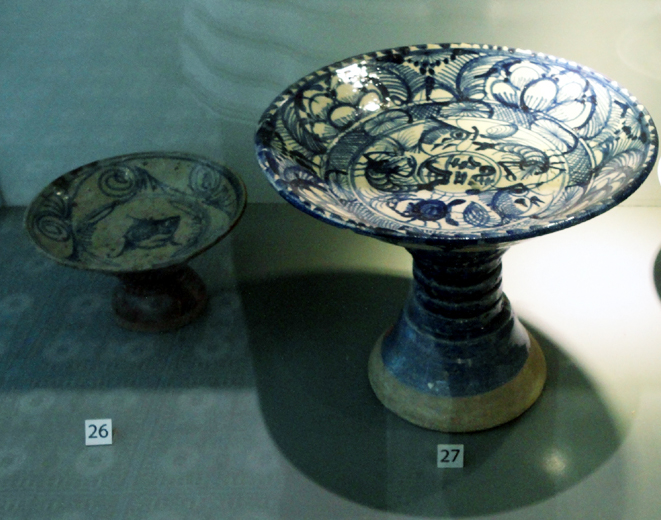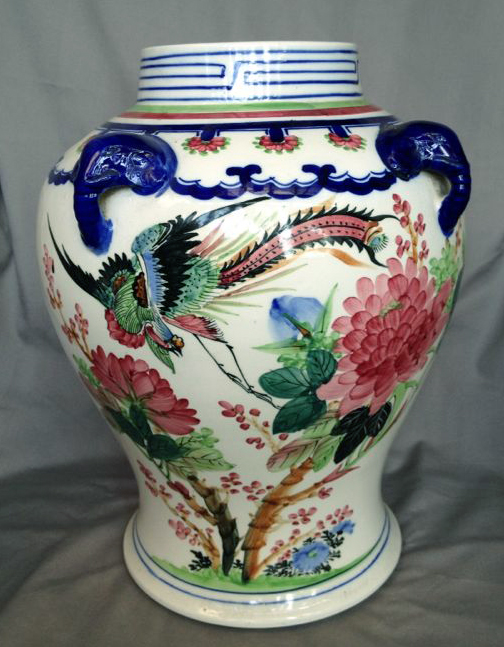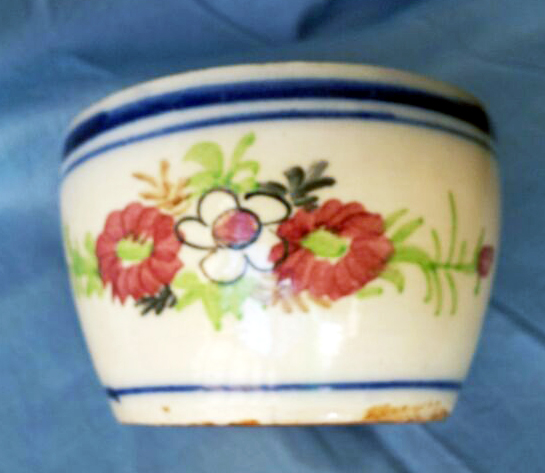|
|
|
19th/20th Vietnamese Shiwan-type Vessels of Old Saigon and Lai Thieu
Many Chinese from Fujian and Guangdong settled down in Vietnam during the Ming/Qing period. One distinct physical evidence of their presence are the Chinese style temples. The roof of the temples are decorated with colour glazed ceramics depicting human subjects, animals, birds, flowers and etc. They are similar to those that were produced by the Guangdong Shiwan potters. In fact, those dated to the Mid to late 19th Century were indeed produced by Shiwan potters engaged from Guangdong Shiwan and shipped to Vietnam. Some of the potters settled down in old Saigon (present day Ho Chiminh) and continued to produce the Shiwan type wares. Their descendents inherited the technology and ensured the continuity and further development of this ceramics art form. To find out more about Shiwan ceramics, please read this article.
19th Cent. Old Saigon coloured glaze ceramics
Vessels produced during that period are similar to those produced in Shiwan. To differentiate them from the actual Shiwan counterparts, one needs to have comprehensive knowledge of products from both region. In the Ho Chiminh Museum of Fine Arts, there are some examples on display and labeled as Old Saigon ceramics. Indeed, it would not be surprising that mainland Chinese ceramics experts identify them as products from Shiwan.
|
|
|
19th Cent. Old Saigon coloured glaze Shiwan-type vessels in Ho Chiminh Museum of Fine Arts
However, over time stylistic differences in terms of the decorative elements and vessel forms became evident. Some of such examples were also on display in the Ho Chiminh Museum of Fine Arts.
|
|
|
Examples showing stylistic differences from those made in Shiwan
By the begining of the 20th Century, a new ceramics centre emerged in Lai Thieu in Binh Duong province, located about 100 km north of Ho Chi Minh City. Back in history, Binh Duong used to be a part of Song Be province, which was divided into Binh Duong and Binh Phuoc in 1997 A.D. Many of the potters were formally from old Saigon and were forced out of the city due to the urbanisation which resulted in space constraints.
Lai Thiu shiwan type ceramics featured a even wider range of decorative motifs and stylistic differences from those made in Shiwan became even more distinct with introduction of Vietnamese elements.
|
|
|
Lai Thieu Shiwan type examples from 1st half of 20th Century
Interestingly, new innovations in Chinese ceramics continued to exert a strong influence in Vietnam. The potters in Lai Thieu also produced blue and white and overglaze enamelled household wares such as bowls, dishes, teapots, cups, chopsticks holders and etc. Stylistically, the decorations are very similar to those produced in Chaozhou Fengxi kilns (潮州枫溪) in Guangdong. In fact, in essence it can be classified as a branch of the Fengxi products. Ceramics wares from Chaozhou were exported to Vietnam during the late 19th/early 20th century. However, in 1923 A.D the Vietnamese Government introduced exorbitant import tax on imported ceramics wares. According to his book on Chaozhou Fenxi kiln (枫溪潮州窑), Mr Li Bingyan (李炳炎)mentioned that as a result of the tax rate hike, Chaozhou Fengxi ceased the export of such wares to Vietnam. As such wares was in demand, the merchants in Vietnam arranged for some of the Fengxi potters to come to Vietnam to produce them locally. Even the porcelain clays used in Fengxi were imported.


Lai Thieu early 20th Cent. blue and white wares
Lai Thieu overglaze enameled wares used basically the following pigment colours : black, crimson red/red, green and indigo. The composition and decorative elements are similar to those made in Chaozhou. Some examples from Chaozhou Fengxi (潮州枫溪) and those made in Lai Thieu are illustrated below.
 |
 |
 |
 |
 |
 |
Chaozhou Fengxi (潮州枫溪) early 20th Cent. overglaze enamelled wares
Lai Thieu early 20th Cent. overglaze enamelled wares
Bien Hoa CeramicsThe first ceramics vocational training school of Indochina, Bien Hoa Vocational Training School, was founded in 1903. In 1913, the school was renamed the Bien Hoa Fine Arts School. In 1923, the couple, Robert Balick and Mariettee Balick, managed the school. They were instrumental in the production of new line of ceramics with interesting glaze effects using natural materials, such as rice straw ash, sand in Da Nang and laterite.
In 1925, the ceramics wares from the Bien Hoa Fine Arts School were successfully exhibited and sold in Paris. At that exhibition, Bien Hoa ceramics was awarded the honorary certificate by the French Government.
Bien Hoa ceramics exhibited in Ho Chiminh Museum of Fine Arts
Written by: NK Koh (15 Feb 2014)